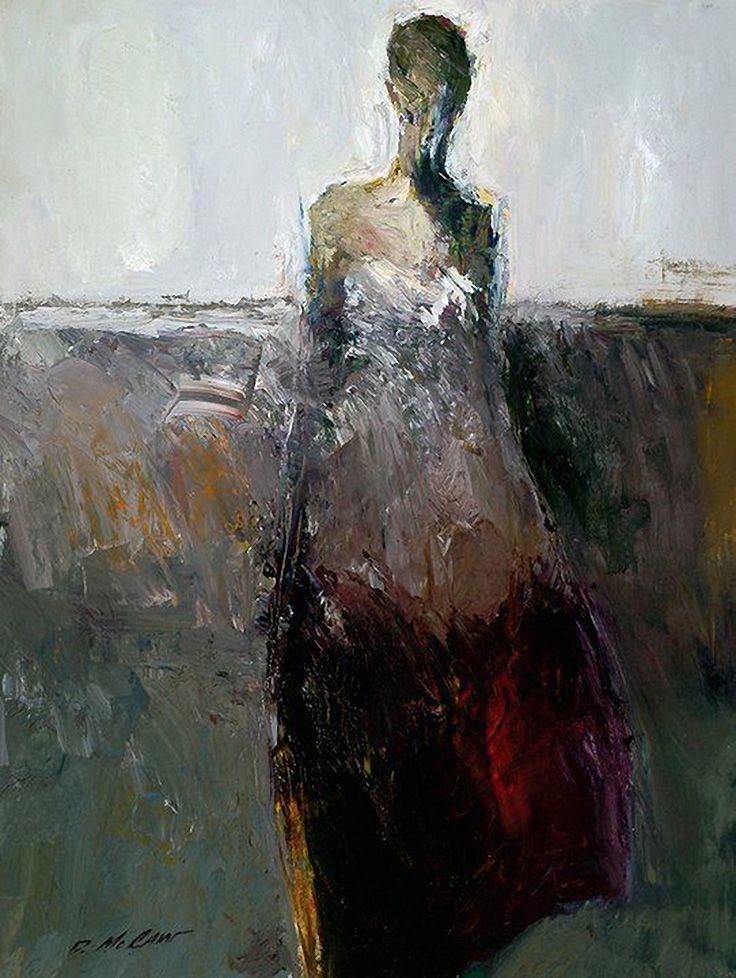 | ||
Mel mccuddin figurative expressionist
According to Marilyn Stokstad, the art historian:
Contents
- Mel mccuddin figurative expressionist
- Early Expressionistic movements
- Early American Figurative Expressionists in the 1930s and 1940s
- New York Figurative Expressionism of the 1950s
- Aspects of Figuration in New York 19501964
- Boston Figurative Expressionism
- West Coast Figurative Expressionism
- Chicago Figurative Expressionism
- Decline of Abstract Expressionism
- References
Early Expressionistic movements
Expressionistic movements before and after 1910 were developed by three artists' groups:
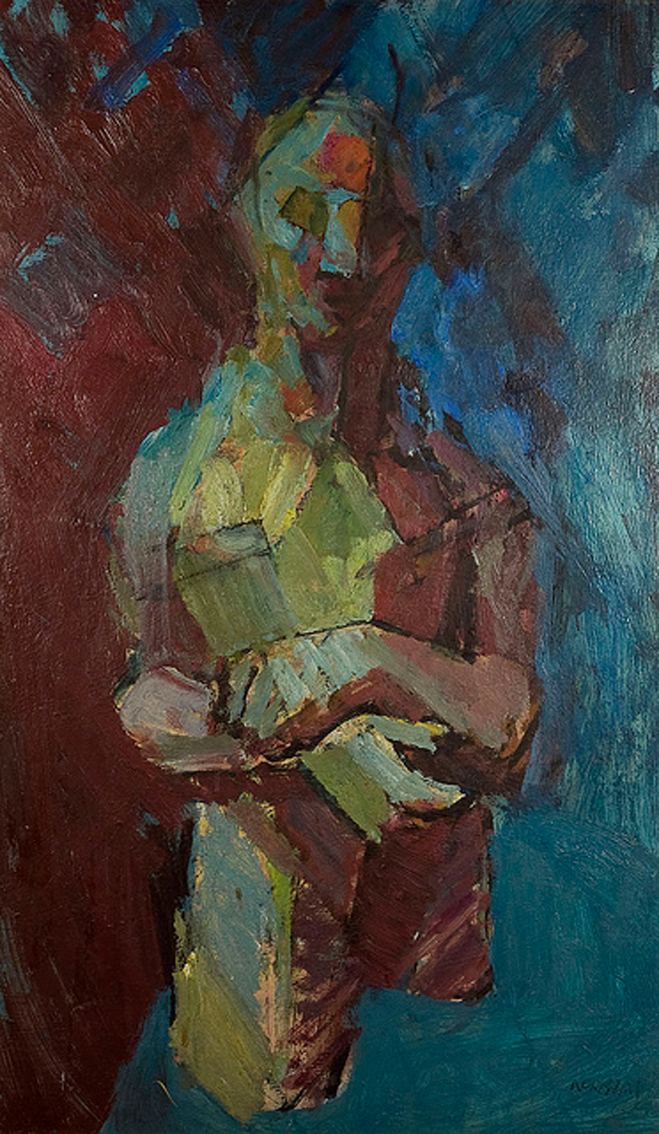
pioneered by James Ensor, Edvard Munch and Vincent van Gogh. One of the earliest and most famous examples of Expressionism is the Starry Night which Vincent van Gogh painted from the window of his room in the asylum at St. Remy.
Early American Figurative Expressionists in the 1930s and 1940s
According to Klaus Kertess, curator of MOCAD:
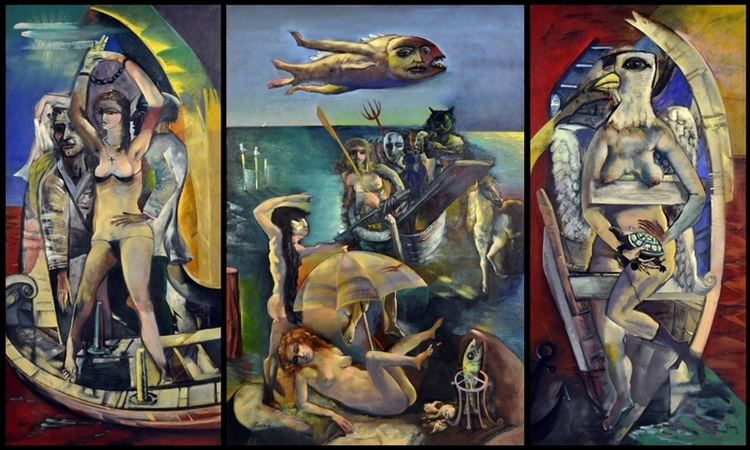
New York Figurative Expressionism of the 1950s
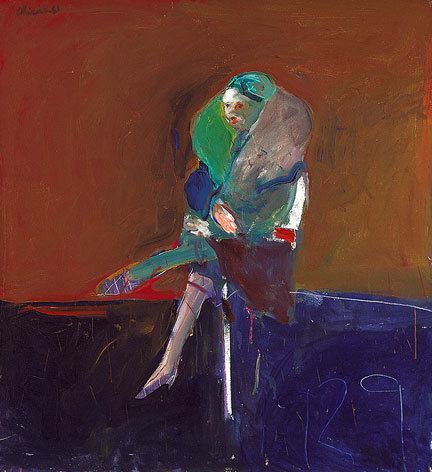
New York Figurative Expressionism of the 1950s represented a trend where "diverse New York artists countered the prevailing abstract mode to work with the figure."
Categories of figurative expressionist modes:
Willem de Kooning, (1904–1997); Jackson Pollock, (1912–1956); Conrad Marca-Relli, (1913–2000)
Larry Rivers, (1923–2002); Grace Hartigan (1922–)

Elaine de Kooning, (1918–1989); Balcomb Greene, (1904–1990); Robert De Niro, Sr., (1920–1993); Fairfield Porter, (1907–1975); Gregorio Prestopino, (1907–1984); Lester Johnson, (1919–2010); George McNeil, (1909–1995); Henry Gorski, (1918–2010); Robert Goodnough, (1917–); and Earle M. Pilgrim, (1923–1976)
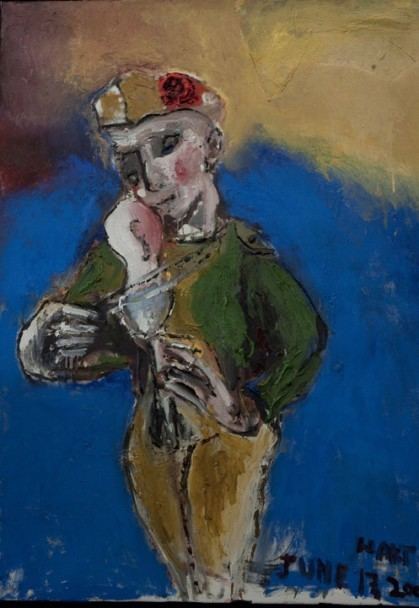
Jan Müller, (1922–1958); Robert Beauchamp, (1923–1995); Nicholas Marsicano, (1914–1991); Bob Thompson, (1937–1966); Ezio Martinelli, (1913–1980) Irving Kriesberg, (1919–2009).
According to Klaus Kertess, curator of MOCAD:
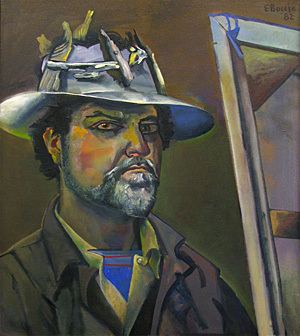
Aspects of Figuration in New York, 1950–1964
According to Judith E. Stein, During the war years and into the fifties, the general public was to remain highly suspicious of abstraction, considered by many as un-American. While the art critic Clement Greenberg successfully challenged the public's negative response to abstraction, his attempt to communicate to the New York figurative painters of the fifties was less successful. A conversation recollected by Thomas B. Hess emphasized the perceived power of the critic:
"It is impossible today to paint a face, pontificated the critic Clement Greenberg around 1950. "That's right," said de Kooning, "and it's impossible not to."In the winter of 1953 a new journal was founded, Reality. The editorial committee included:
The Journal's intention was "to rise to the defense of any painter's right to paint any ways he wants."
In the Autumn of 1959 Philip Pavia, the "partisan publisher" of It is, a magazine of abstract art wrote in an open letter to Leslie Katz, the new publisher of Arts Magazine:
"I am begging you to give the representational artist a better deal. The neglected representational and near-abstract artists, not the abstractionists, need a champion these days."Although the New York Figurative Expressionists lacked advocates of the stature of Clement Greenberg or Harold Rosenberg, they were recognized by critics who perceived them as the new radicals.
"representatives of a new generation to whom figurative art was in a sense more revolutionary than abstraction."The literary historian, Marjorie Perloff has made a convincing argument that Frank O'Hara's poems on the works of Garace Hartigan and Larry Rivers proved "that he was really more at home with painting that retains at least some figuration than with pure abstraction." Frank O'Hara wrote an elegant defense in "Nature and New Painting," 1954. He listed the following artists:
who responded to "the siren-like call of nature." O'Hara aligned the New York Figurative Expressionists within abstract expressionism, which had always taken a strong position against an implied protocol, "whether at the Metropolitan Museum or the Artists Club." Thomas B. Hess, wrote:
"the 'New figurative painting' which some have been expecting as a reaction against Abstract Expressionism was implicit in it at the start, and is one of its most lineal continuities."Boston Figurative Expressionism
The well-known art historian Judith Bookbinder established Boston Figurative Expressionism as an integral part of American modernism bracketing the Second World War:
"(it) expressed the anxiety of the modern age with the particular accent of the city…Boston figurative expressionism was both a humanist philosophy – that is, a human-centered and rationalist or classically oriented philosophy – and a formal approach to the handling of paint and space."The German Expressionists' images of Max Beckmann, George Grosz and Oskar Kokoschka were the source of Boston Figurative Expressionism.
The early members of the Boston Expressionist group were immigrants or children's of immigrants from Central Europe, and many of them were Jewish with Germanic background.
Members of the Boston Figurative Expressionists:
West Coast Figurative Expressionism
,
Chicago Figurative Expressionism
Chicago's figurative expressionists of the 1950s "shared a deep concern with an existential human image of thwarted but inexorable endurance." According to the Poet and Art Critic, Carter Ratcliff:
"The Chicagoans of the 1950s never coalesced into a group. For all its incompatibility, their art shared one purpose: to announce the artist's alienation in terms clear enough to be widely understood.Members of the Chicago figurative expressionists:
Decline of Abstract Expressionism
"In the United States by the end of the 1950s... Abstract Expressionism was no longer, in fact, new... The crisis of Abstract Expressionism now freed many ...artists to follow their long-frustrated inclination to paint the figure," which resulted in the resurgence of the American Figurative Expressionsim. Richard Diebenkorn was among the earliest Abstract Expressionist who returned to the figure before the crisis of Abstract Expressionism.
